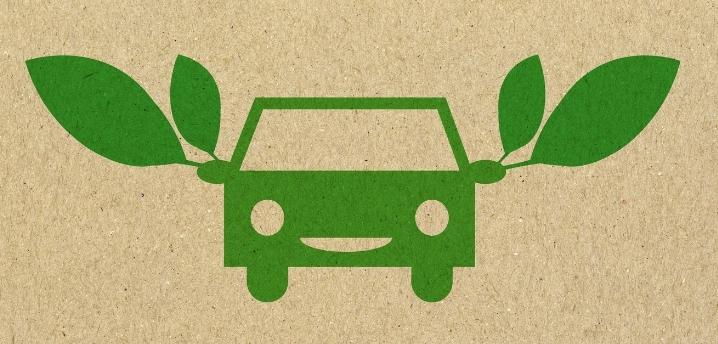Even car loans are going green! Financing options are available specifically for EVs and hybrids.
Electric vehicles (or EVs as they’re commonly known) are becoming more popular than ever. In fact, EV sales made up over 5% of all car sales for the first time ever in the first quarter of 2022, according to Kelly Blue Book. And with the President’s recent goal of having EV sales make up 50% of all new car sales by 2030, sales won’t be slowing up anytime soon.
However, just like with any other car, there’s a big barrier to most people: the cost. And while there are affordable EVs, on average, you can expect to pay about $10,000 more for an EV than you would for a regular gas-powered car.
Luckily, there’s a relatively affordable solution available for most people: green car loans. Here’s what you need to know about them if you’re considering buying an electric car.
What Is a Green Auto Loan?
A green auto loan is a special type of car loan specifically for fuel-efficient vehicles. The details about which vehicles qualify vary by lender and can include fully electric cars, hybrid vehicles that use gas or electricity, or even very fuel-efficient regular cars. Green vehicle loans can be used to purchase new vehicles from a dealership or to refinance an existing green car loan.
It’s important to note that you don’t necessarily need to use a green loan to finance the purchase of a new EV. You can use any old car loan for that if you want, and many people do.
But green loans in particular have one big advantage — they’re often a lot cheaper. Depending on the lender, you may be able to get a loan with an annual percentage rate (APR) of 1% lower than for a regular car (for example, 3% APR instead of 4% APR). Some lenders can offer additional perks on a green car loan, like 100% financing or higher loan amounts.
Even though lenders might offer a rate or loan discount specifically for EVs, via a green car loan, it’s still a good idea to shop around for regular car loans. It’s possible that another lender could offer low rates on all of its vehicle loans (including EVs), so it’s worth your time to include them.
Just be aware that it’s quite possible you’ll find the best auto loan rates with a green car loan, and besides the type of vehicle you’re using the loan to buy, there really isn’t much else that’s different between the two types of loans.
Why Buy a Green Car?
Green cars — like EVs — aren’t just for crunchy, granola-types anymore. Here are some of the main reasons why you might consider one for your next vehicle.
Healthier communities and better lives
Cars with internal combustion engines (ICEs) that burn gasoline or diesel fuel have been around for all of our lifetimes, and we came to expect them as the norm. But that doesn’t mean they’re necessarily the safest option.
Fumes that normal cars pipe out are damaging to just about every bit of your body. You’ve probably heard that car emissions aren’t healthy for your respiratory system and that’s absolutely true, but it goes way beyond that.
Car exhaust contains carcinogens, meaning it can cause cancer. It can also cause damage to your nervous system, cardiovascular system, immune system, and even reproductive system, according to the Environmental Protection Agency.
Unfortunately, car exhaust can be particularly harmful to children, and can potentially lead to complications that last for their entire life. And you don’t even have to be standing near the tailpipe of a running car to be in danger since smog and fumes can spread out far and wide. A full 93% of Californians live with polluted air that doesn’t meet basic federal or state health guidelines, for example.
Switching to an EV can literally give you peace of mind that you’re helping your community breathe better and live healthier, longer lives. While also saving money on potentially expensive medical care.
Preserve the environment
Direct health consequences aside, going green is good for the environment. It’s no secret that our climate is changing, and not for the better. Species are going extinct, weather is becoming more severe, and these changes impact us all, in every facet of our life.
By switching to an electric vehicle, though, you can feel great that you’re doing your part to help keep the world habitable for the future. You don’t need to give up your love of road trips, your daily drives to work, or your weekend adventures.
Increase our domestic energy security
There’s been a lot in the news lately about how international conflicts can make fuel scarce, driving up prices. Even before that, oil is becoming harder and harder to get without resorting to costly methods that damage our land.
But here’s the upside of going electric: it increases our national energy security because, unlike oil, we can get all we need to power EVs domestically, and without destructive methods. We can wean ourselves away from sourcing fuel internationally, and create truly energy-efficient ways to get around, regardless of geopolitical situations.
Save a lot of money
If none of the other reasons have convinced you, here’s one that anyone can appreciate: you can save a ton of money.
It’s true that EVs are more expensive than a regular car (about $10,000 more, on average, although quality affordable models do exist). Even after that, you may need to pay for a home charging station which can cost around an additional $2,000.
But after the high upfront cost, there are lots of ways you can save money so that you come out further ahead than with a regular gas guzzler.
Tax credits
The federal government has a very generous tax credit program for purchasing new EVs. The way it works is a little odd. The IRS only doles out a set quota of tax credits for each model of car, meaning that some popular models, like all of Tesla’s cars, no longer qualify for tax credits.
But for many other great EVs, like the Hyundai Kona and the Nissan Leaf, you may be able to get a tax credit for up to $7,500. To see which cars still qualify for the tax credits and how much, check with the Department of Energy.
Currently, this is a non-refundable tax credit. This means that when you file your taxes, if your tax liability for the year is already reduced down to $0, you won’t benefit from the tax credit at all. But Biden has proposed changes to the law to make the tax credit refundable, which will allow you to get that full amount back no matter what. Time will tell if this proposed change becomes law.
There are also many state-level tax credits, rebates, and other incentives available, such as waiving the sales tax on new EV sales. To see what’s available in your state, check out Plug In America’s directory.
Gas savings
A more obvious way to save money is that you won’t need to buy gas anymore. Forget long lines at the pump and your wallet being at the whims of geopolitical conflicts and declining oil reserves; you’re past that.
Energy still isn’t free with an EV but it’s a lot cheaper. According to AAA’s 2021 Driving Cost survey, you could expect to pay an average of 11 cents per mile for fuel in a regular car. For an EV, though, you can expect to pay about four cents per mile, on average, according to the Department of Energy.
If you’re on a cross-country road trip between Portland, Oregon, and Portland, Maine, that’s a savings of about $446. And remember: If you have home solar panels, your fuel really can be essentially free.
Less maintenance
Everyone’s favorite time is when their car starts making clunky noises and they have to take it to the mechanic (cue sarcasm). But with a full-on EV, you won’t have that worry nearly as much anymore.
EVs still have some of the same basic car parts you’d expect: Lights, a braking system, climate control, etc. But they’re a lot simpler than a combustion engine, without as many of the weird tubes and mystery wires you find under the hood of a regular car. And since they’re simpler machines, they also require less maintenance and cost.
Keep in mind that this logic only extends to fully electric cars, and not hybrids. That’s because electric hybrids still have an internal combustion engine.


How Do You Apply for a Green Car Loan?
Green car loans can offer better interest rates, but besides that, they’re really not that different from any other car loan. You’ll still apply for them in the same way that you apply for a regular car loan. Here’s the best way to do it:
- Make sure your credit is in tip-top shape: It’s always good to find out what your credit history is and how to improve your credit score before shopping for a loan. If you boost your eligibility, you may be able to save a lot of money by getting a better rate on your loan.
- Shop for rates: Reach out to as many lenders as you can to check your rate, including online lenders, banks, and credit unions. Remember, you can use a regular car loan or a green car loan and the rates may vary, so be sure to check your rates with both types of loans.
- Choose a lender: Choose the lender that offers the lowest rates along with the best features you’re looking for, such as certain term lengths, financing amounts, etc.
- Apply for the loan: Contact the winning lender to let them know you’d like to proceed with the application. Make sure to stay in touch in case they need any documents or other information to speed up your loan decision. Use online banking for faster communications.
- Get your loan and your new electric car: If you’re approved, congratulations. You’ll need to be in contact with the lender and the car buyer to make the transaction move seamlessly and you can drive off the lot when you’re ready.
- Set up automatic payments: Make things easier for your repayment by putting things on autopilot. This way you won’t have to remember to make payments or ever pay a late fee again. Before you know it, your car will be paid off.
Is a Green Auto Loan Worth It?
If you’re ready for an electric car but you don’t have the cash to buy one outright, a green car loan can be well worth it. It can make it possible to take advantage of tax incentives, while they’re still available, and help make the world a better place at the same time.
About The Author
RateGenius
A better way to refinance your auto loan. RateGenius works with 150+ lenders nationwide to help you save money on your car payments. Since 1999, we've helped customers find the most competitive interest rate to refinance their loans on cars, trucks, and SUVs. www.rategenius.com
;)



